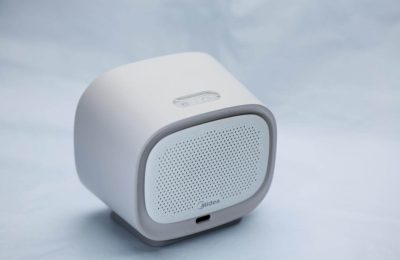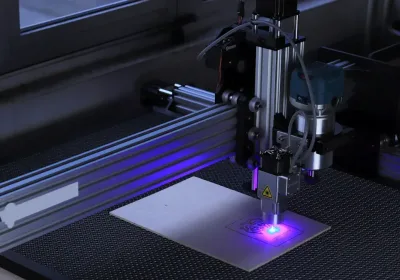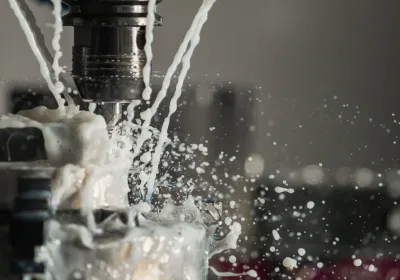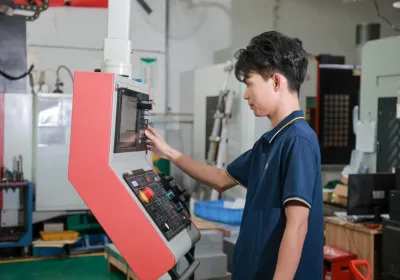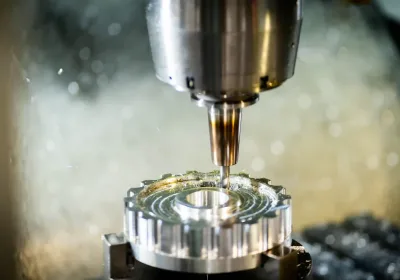
Kovar machining services deliver precise solutions for industries that demand high reliability. Kovar, a nickel-iron alloy, often appears in aerospace, electronics, and medical sectors. These industries require components with exact tolerances and certified quality. Kovar machining services use advanced equipment to handle the unique challenges of this material. Consistent performance and tight control ensure that every kovar part meets strict standards.
Key Takeaways
Kovar machining uses advanced tools and careful settings to shape a special metal alloy with high accuracy and durability.
This machining supports industries like aerospace, electronics, and medical by making parts that resist heat changes and fit tight tolerances.
Precision in Kovar parts comes from skilled operators, strict process control, and advanced inspection methods like virtual metrology.
Certifications such as ISO 9001, AS9100, and ITAR prove a provider’s commitment to quality and compliance in Kovar machining.
Choosing a Kovar machining provider means checking their experience, equipment, certifications, and quality assurance to ensure reliable results.
Kovar Machining Services
What Are Kovar Machining Services
Kovar machining services focus on producing kovar components with high accuracy and reliability. Kovar, a specialized metal alloy made of about 29% iron, 29% nickel, and 17% cobalt, stands out for its low thermal expansion and strong mechanical properties. These services use advanced machining methods to shape kovar metal into precise parts.
CNC machining processes such as milling, turning, drilling, and grinding allow for tight tolerances and smooth surface finishes.
Carbide or diamond-coated tools handle the hardness and brittleness of kovar alloy, reducing tool wear and maintaining part quality.
Machining parameters often include slower spindle speeds and higher feed rates to prevent work hardening and overheating.
Pre-annealing and post-annealing treatments help maintain the stability and lifespan of kovar components.
Surface finishing steps, like oxidation prevention, ensure the durability and performance of kovar metal parts.
Kovar machining services require specialized knowledge and equipment. Operators must control every step to meet the strict demands of high-precision applications. These services set themselves apart from standard metal machining by focusing on the unique challenges of kovar machining.
Applications of Kovar Machining
Kovar machining supports a wide range of applications across several industries. The unique properties of kovar metal, such as its low coefficient of thermal expansion, make it ideal for glass-to-metal seals. This feature allows kovar components to bond with glass or ceramics, creating airtight seals in electronics and vacuum systems.
In the aerospace sector, kovar machining services produce aerospace components that must withstand extreme temperature changes. Electronics manufacturers use kovar machining to create lead frames and hermetic seals for microwave tubes. Medical applications benefit from kovar's biocompatibility, enabling the production of implants and surgical tools. Instrumentation companies rely on kovar application for ceramic sealing in sensitive devices.
Machining data shows that CNC turning can achieve tolerances up to +/- 0.005", while advanced processes reach as tight as +/- 0.0002". Feed rates and speeds are carefully controlled to match the needs of each application. The broad applications of kovar machining highlight its value in producing reliable, high-performance components for demanding environments.
Kovar Properties
Machinability of Kovar
The machinability of kovar sets it apart from many other alloys. Kovar contains a mix of nickel, iron, and cobalt, which gives it unique properties. Machining kovar requires careful control of speeds, feeds, and tool selection. Operators often use carbide or high-speed steel tools to achieve the best results.
Drilling a 4.76 mm hole in kovar works best at about 40 feet per minute (FPM). The feed rate should stay between 0.0508 mm and 0.0635 mm per revolution.
For larger 12.7 mm holes, machinists use a similar speed but increase the feed to 0.1016 mm to 0.127 mm per revolution.
Drill point angles between 118° and 120° help reduce tool wear and improve surface finish.
Carbide tools allow higher cutting rates and work well for uninterrupted cuts. High-speed steel tools perform better when finishing or roughing uneven surfaces. Experimental tests show that increasing cutting speed can lower burr size by up to 85%. This improvement leads to better surface quality and overall performance of kovar components.
Tool Type | Flank Wear (relative) | Cutting Speed (m/min) | Wear Performance | Additional Notes |
|---|---|---|---|---|
P10 Tool | Smallest flank wear | ≥ 200 | Best wear, surface finish, and lowest cutting force | Optimal for kovar machining at high speeds |
Cemented Carbide with TiN | Largest flank wear | Various | Worst wear performance | TiN coating destroyed at high temp, causing fracture and diffusion wear |
Ceramic Tools | Moderate wear | Not specified | Susceptible to micro-chipping and welding wear | Chip tangling issues; performance can improve by chip control |
Challenges in Kovar Machining
Machining kovar presents several challenges. The kovar alloy tends to work harden quickly, which can cause rapid tool wear. Operators must select the right tools and set proper speeds to avoid damaging the material. Kovar’s low thermal expansion helps in some applications, but it also means that heat builds up during machining. This heat can affect the performance and stability of finished components.
Machinists often face issues with chip control, especially when using ceramic tools. Chips can tangle and cause surface defects. The hardness of kovar also makes it difficult to achieve tight tolerances without advanced equipment. Consistent quality requires strict process control and frequent inspection. These challenges highlight the need for skilled operators and specialized machines to produce high-performance kovar components.
Kovar Machining Process
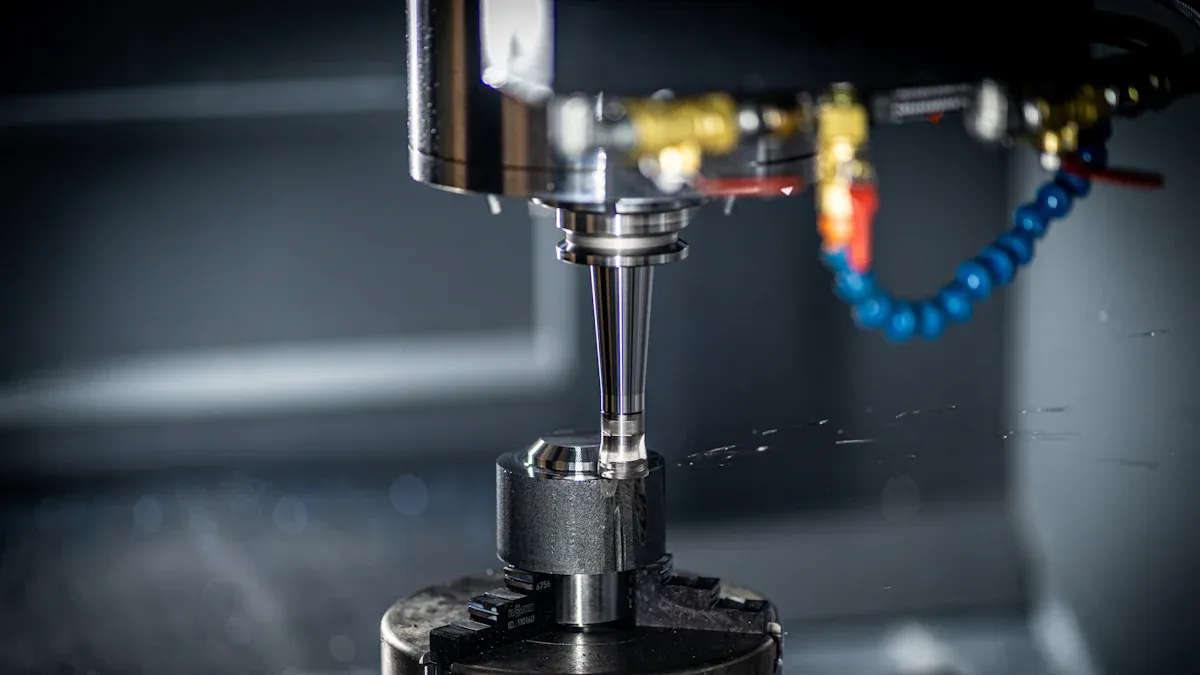
CNC Machining
CNC machining stands as the backbone of the kovar machining process. Skilled operators use CNC lathes, mills, and turning centers to shape kovar into precise forms. CNC machines follow programmed instructions, which allows for repeatable accuracy and tight tolerances. Five-axis CNC machines can move tools along multiple axes, making complex kovar parts possible. Swiss CNC machines excel at producing small, intricate kovar components with high precision.
Operators select carbide or diamond-coated tools to handle kovar’s hardness. They set slower spindle speeds and higher feed rates to reduce work hardening. This approach helps extend tool life and maintain surface quality. CNC machining supports a wide range of operations, including:
Turning
Milling
Drilling
Boring
Thread cutting
Slotting
Knurling
Tapping
Each operation requires careful adjustment of speeds and feeds. For example, drilling kovar needs a sharp tool and a steady feed to avoid overheating. Machinists often use coolant to control temperature and prevent thermal damage. CNC machining ensures that kovar parts meet strict industry standards for performance and reliability.
EDM and Micromachining
EDM (Electrical Discharge Machining) and micromachining play a vital role in the kovar machining process. EDM uses electrical sparks to erode material from kovar, making it ideal for hard-to-machine shapes and fine details. Wire EDM and sinker EDM both allow for the creation of complex internal features and sharp corners that traditional tools cannot achieve.
Micromachining techniques, such as micro-milling and micro-drilling, produce tiny features on kovar parts. These methods are essential for industries like optoelectronics and electronics, where small, precise kovar components are required. Research from Precision Engineering shows that combining electrochemical micromachining and electrodischarge micromachining increases material removal rates and improves surface finish. Experiments at Cracow University of Technology confirm that hybrid machining processes deliver better results for precision microfabrication.
Tip: EDM and micromachining minimize mechanical stress on kovar, which helps preserve material properties and ensures consistent performance.
The following table highlights the use of kovar in advanced applications that benefit from EDM and micromachining:
Industrial Field | Application Area | Materials Used |
|---|---|---|
Optoelectronics | Optical fibers, laser accelerators | Includes Kovar |
Electrical & Electronics | Electrode tubes for EDM, contact probes | Nickel alloys, Copper alloys |
These processes allow manufacturers to achieve the fine tolerances and intricate geometries needed for high-performance kovar parts.
Other Machining Methods
The kovar machining process also includes several other methods to meet diverse production needs. Broaching shapes internal and external profiles with a single pass of a toothed tool. Hobbing creates gears and splines on kovar components. Slotting forms keyways and slots, while boring enlarges existing holes with high accuracy.
Machinists use thread cutting to produce precise threads on kovar parts. Knurling adds textured patterns for better grip or assembly. Tapping creates internal threads for fasteners. Each method requires careful tool selection and parameter control to avoid work hardening and tool wear.
Best practices for kovar machining include:
Using sharp, high-quality tools to reduce cutting force
Applying coolant to manage heat buildup
Setting optimal speeds and feeds for each operation
Inspecting tools frequently for signs of wear
These steps help maintain the integrity of kovar and ensure that finished components meet exact specifications. The right combination of machining methods allows manufacturers to produce kovar parts that deliver reliable performance in demanding environments.
Precision and Tolerances
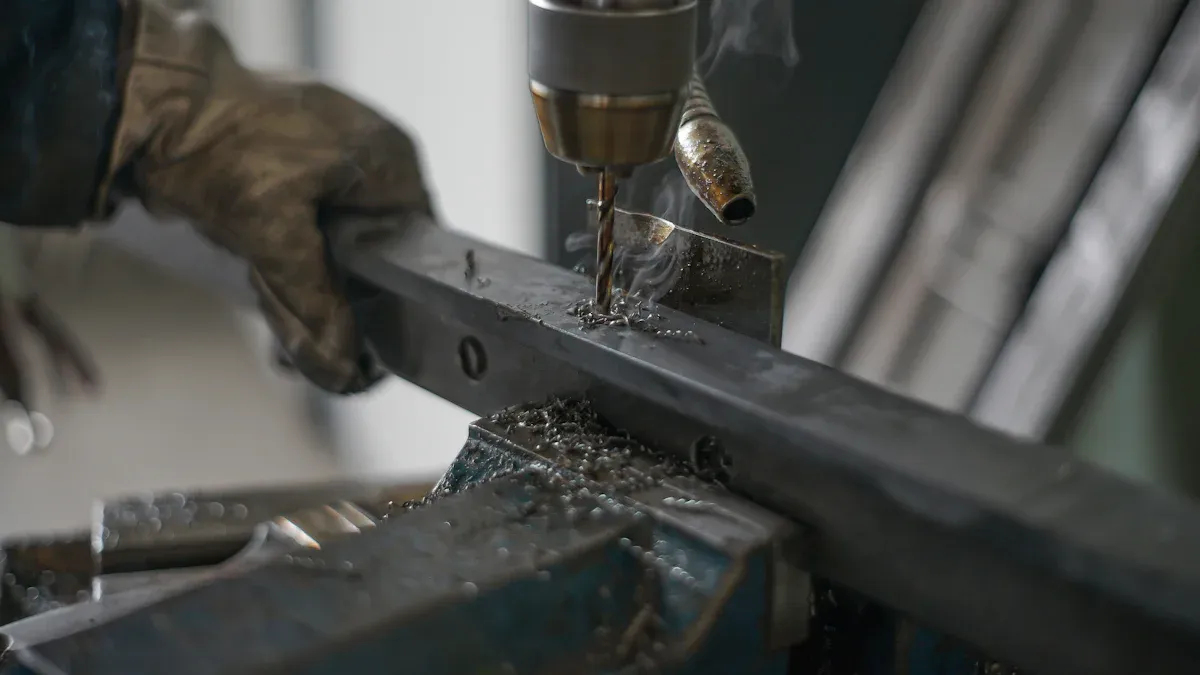
Standard Tolerances
Kovar machining demands strict tolerances to ensure reliable performance in critical applications. Most manufacturers achieve standard tolerances ranging from +/-0.001 inch to +/-0.005 inch for kovar parts. Advanced processes can reach tolerances as tight as +/-0.0002 inch. These tight tolerances help maintain the integrity of kovar components in environments where even small deviations can cause failure.
Machinists select the right tools and set precise parameters to meet these requirements. CNC machines, EDM, and micromachining all contribute to achieving these tolerances. The choice of method depends on the complexity and size of the kovar part. Consistent results require careful planning and attention to every detail during production.
Achieving High Precision
Precision machining of kovar relies on several factors. The stability of the machining environment plays a key role. Temperature changes can affect the material and the machines. Operators monitor conditions closely to keep everything within set limits. Tool selection also matters. Carbide and diamond-coated tools help reduce wear and keep cuts clean.
Process control ensures that each kovar part meets the required precision. Manufacturers use advanced systems to track every step. They adjust speeds, feeds, and tool paths based on real-time data. This approach helps prevent errors and keeps tolerances tight.
Note: Precision machining of kovar often uses virtual metrology and automatic virtual metrology systems. These systems estimate measurement values using equipment and process data. They predict machining precision and provide real-time quality assurance. This technology allows for rapid defect detection and precision verification, even in complex manufacturing environments.
Inspection Methods
Inspection methods verify that kovar components meet strict precision standards. Manufacturers use both traditional and advanced techniques. Calipers, micrometers, and coordinate measuring machines (CMMs) check dimensions and surface finishes. Automated systems speed up the inspection process and reduce human error.
High-throughput automated electron backscatter diffraction (HT-EBSD) provides detailed microstructural data. This method links manufacturing parameters with the internal structure of kovar. It helps verify that the material meets all requirements for strength and stability. The following table shows how measurement and inspection technologies support high precision in kovar manufacturing:
Aspect | Description |
|---|---|
Material | Kovar alloy (Fe-29Ni-17Co), known for precise thermal expansion properties |
Manufacturing Process | Laser Powder Bed Fusion (LPBF) with varied laser parameters |
Measurement Technology | High-Throughput Automated Electron Backscatter Diffraction (HT-EBSD) |
Sample Preparation | Multi-sample EBSD specimens; dry electropolishing and automated SEM imaging |
Data Output | Large library of EBSD maps correlating laser parameters with microstructure and mechanical properties |
Quantitative Verification | Enables rapid, high-throughput microstructural characterization to verify precision in material structure and process control |
Application | Supports machine learning models to predict and optimize manufacturing precision |
Manufacturers also use virtual metrology and automatic virtual metrology systems to enhance inspection. These systems process equipment and production data to estimate measurement values. They provide real-time feedback and adapt to changes in the machining process. Coupled schemes like target value adjustment and deformation fusion help manage customization and component deformation without slowing production.
Virtual metrology estimates measurement values using process data.
Automatic virtual metrology predicts machining precision through data analysis.
These systems enable rapid, data-driven defect detection and precision verification.
They support high precision verification in smart manufacturing environments.
Rigorous quality control ensures that every kovar component meets the highest standards. Inspection methods catch defects early and help maintain consistent quality across all batches. This approach builds trust in kovar machining services and supports their use in demanding industries.
Certifications for Kovar Machining
ISO 9001 and AS9100
Manufacturers who machine kovar must follow strict standards. ISO 9001 and AS9100 set the foundation for quality in this field. ISO 9001 focuses on a company’s ability to deliver consistent quality. AS9100 builds on these requirements for the aerospace industry. Both certifications require companies to document their processes and prove that they meet customer needs. Auditors check that every step supports high quality. Companies with iso certifications show that they value quality and traceability.
Tip: Customers should always ask for proof of these certifications before starting a project.
ITAR and Other Certifications
Some kovar machining projects involve sensitive or defense-related work. The International Traffic in Arms Regulations (ITAR) controls the export and handling of defense materials. Companies that work with ITAR must register and follow strict rules. This protects national security and ensures that only approved parties handle certain kovar components. Other important certifications include RoHS for hazardous substances and REACH for chemical safety. These certifications help companies meet global standards and protect end users.
A quick reference table:
Certification | Focus Area | Industry Example |
|---|---|---|
ITAR | Defense compliance | Aerospace, Military |
RoHS | Hazardous materials | Electronics |
REACH | Chemical safety | Medical, Automotive |
Why Certifications Matter
Certifications play a key role in kovar machining. They prove that a company can deliver high quality every time. Customers in aerospace, electronics, and medical fields demand this level of quality. Certifications also reduce risk. They ensure that every kovar part meets strict requirements. Companies with the right certifications can trace each part from raw material to finished product. This traceability supports quality at every stage. Certifications also open doors to new markets and customers.
Note: Choosing a provider with strong certifications helps guarantee quality and reliability for every kovar component.
Choosing Kovar Machining Services
Evaluating Providers
Selecting the right provider for kovar machining requires careful attention. Companies should review the technical capabilities of each provider. They need to check if the provider has experience with kovar and advanced machining equipment. Providers with a history of delivering custom kovar machining solutions show strong expertise. Customers should ask about certifications, such as ISO 9001 or AS9100, to confirm a commitment to quality.
A helpful checklist for evaluating providers:
Does the provider offer custom kovar machining solutions?
What types of machining equipment do they use?
Can they share examples of past kovar projects?
Do they have the required certifications?
Tip: Providers with deep expertise in kovar machining can handle complex parts and tight tolerances.
Quality Assurance
Quality stands at the center of kovar machining. Providers must use strict quality assurance processes to check every part. These processes include regular inspections, precise measurements, and documentation. Companies should ask how providers track quality during production. Providers with strong quality systems can catch problems early and deliver reliable kovar components.
A table can help compare quality practices:
Provider | Inspection Tools | Documentation | Quality Certifications |
|---|---|---|---|
Provider A | CMM, Micrometers | Full Traceability | ISO 9001, AS9100 |
Provider B | Calipers Only | Limited | None |
Lead Times and Supplier Diversity
Lead times affect project schedules. Providers who specialize in kovar machining often deliver parts faster. Companies should ask about typical lead times for kovar services. Supplier diversity also matters. Working with multiple providers reduces risk and keeps supply chains strong.
Questions to ask:
What is the average lead time for kovar machining orders?
Can the provider scale production for large orders?
Does the provider support diverse sourcing options?
Note: Fast lead times and a diverse supplier base help companies stay flexible and meet changing demands for kovar components.
Understanding kovar machining processes, tolerances, and certifications ensures reliable results in demanding industries. Selecting a certified provider with expertise in kovar is essential for quality and precision. When choosing a kovar machining service, consider these steps:
Prioritize providers with proven experience and advanced equipment.
Verify certifications and quality assurance practices.
Review customer feedback and evaluate the provider’s ability to meet project requirements.
These actions help secure dependable kovar components for critical applications.
FAQ
What industries use Kovar machining services?
Aerospace, electronics, and medical device manufacturers rely on Kovar machining. These industries need components with tight tolerances and certified quality. Kovar’s unique properties make it ideal for applications that demand reliability and precision.
How does Kovar differ from other alloys in machining?
Kovar resists thermal expansion and maintains stability under temperature changes. Machinists use special tools and slower speeds to prevent work hardening. This alloy requires more attention during machining than common steels or aluminum.
What certifications should a Kovar machining provider have?
Providers should hold ISO 9001 for quality management. AS9100 certification is essential for aerospace work. ITAR registration is required for defense projects. These certifications ensure consistent quality and regulatory compliance.
How can customers ensure high precision in Kovar parts?
Customers should request detailed inspection reports. Providers often use CMMs, micrometers, and virtual metrology systems. A sample checklist:
Confirm tool calibration
Review inspection data
Ask for process documentation
These steps help verify that each part meets strict specifications.
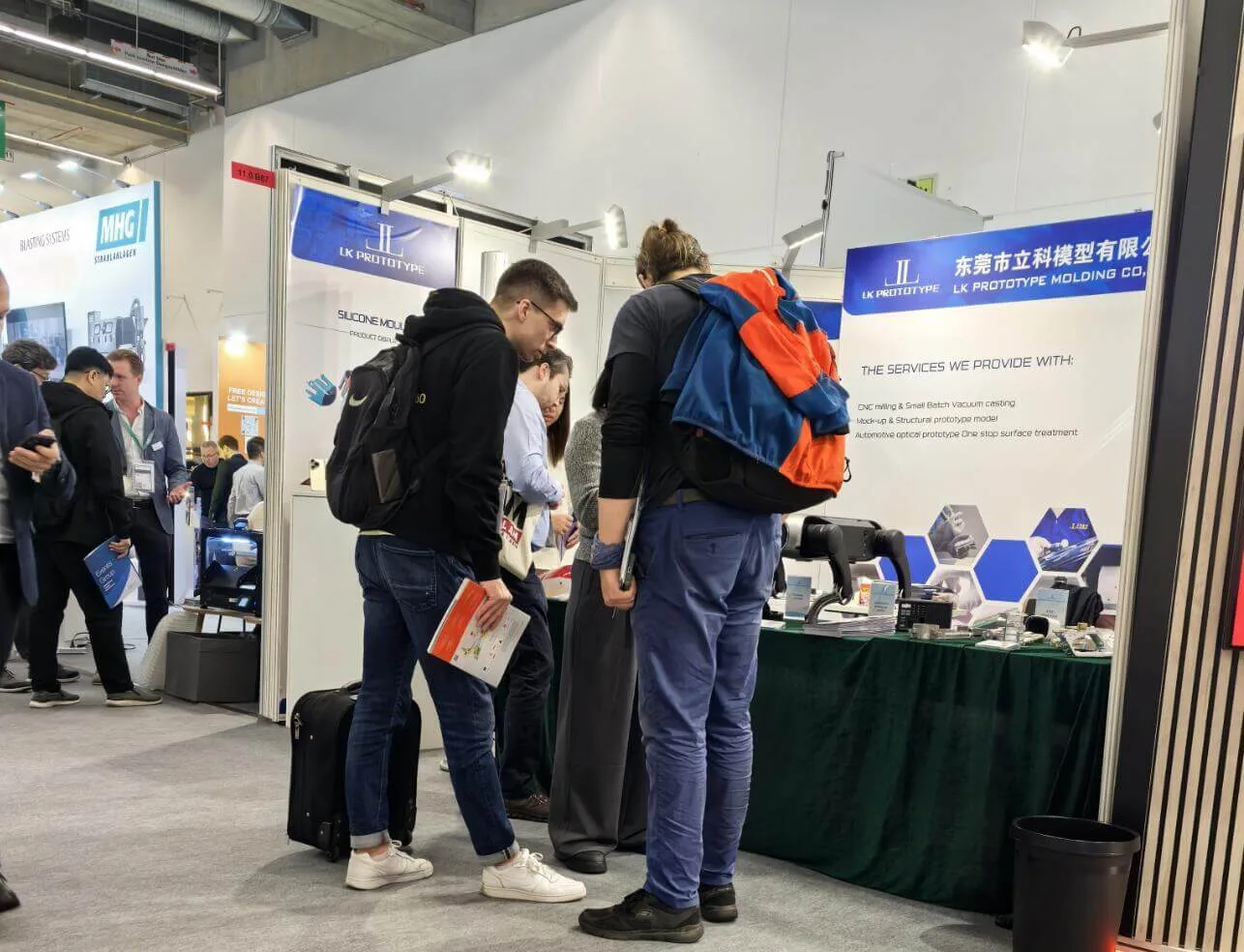
Start your project with LKprototype
LKprototype company simplifies procurement for custom manufacturing, Suitable for making your products or prototypes with a variety of materials, such as metal or plastic, silicone rubber, from 3D Printing to CNC Machined Parts and Urethane Casting Service , with a focus on speed and efficiency. Our platform provides instant quotes. With LKprototype, You can connect with the team to communicate your project to ensure quality and on-time delivery.
Start with an instant quote and experience how our technology and expertise can make custom part procurement faster and easier.
 LKprototype
LKprototype

